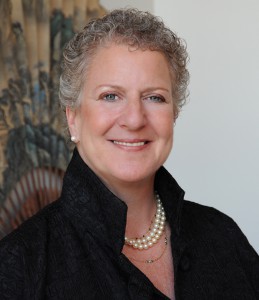The recently released Giving USA 2011 annual report on philanthropy showed that international affairs (giving) is the big winner – up 18.6 per cent cumulatively between 2008 and 2010. Some may assume that this rising subsector of giving is simply reflective of the largesse of Bill Gates. In fact, that’s not the case – although one should not minimize the significant role that Gates is playing internationally, with some $1.9 billion invested in global health and development in 2010 representing 12 per cent of the $15.7 billion that reportedly went to international causes in 2010.
A constant flow of diaspora giving back to home countries from the multicultural population of the US constitutes a significant percentage of that figure. Additionally, a growing number of Americans better understand the interdependence of our world and that disparities between rich and poor, poverty, health, the environment and climate change particularly know no borders.
Corporations are also part of this giving equation. This is because of the increasingly multinational business environment coupled with internal shareholder pressure for greater corporate social responsibility. As they become more significantly engaged in global philanthropy, companies are recognizing that they can both do good and do well.
So how do we sustain the growth of international giving here in the US? The answer is directly connected to the availability of information and heightened visibility of this giving sector. There are certainly indicators of growing attention to cross-border giving: our very own – John Harvey – founder and past executive director of Grantmakers Without Borders is now the Managing Director of Global Philanthropy at the Council on Foundations. Paula Johnson (formerly with Harvard) and TPI’s Center for Global Philanthropy completed a significant study on giving around the globe in concert with WINGs, Global Institutional Philanthropy. There is Global Impact’s Moving Beyond Boundaries: The Rise of International Giving. There is also increasing awareness of the existence of, and important work being done by, global intermediaries here in the US such as Global Greengrants Fund, Global Fund for Women, Global Fund for Children and the Fund for Global Human Rights to name a few. These organizations are contributing greatly to donors’ access to the world of global philanthropy.
There are other hopeful signs here as well. Newly founded organizations like the Pacific Northwest Global Donors have created a community of global donors. Community Foundations are exploring how to facilitate global gifts and commercial donor advised funds such as the Fidelity Charitable Gift Fund are now able to facilitate global grants. The Council on Foundations and TechSoup Global are creating an Equivalency Determination Information Repository to make the equivalency determination process (one that is required for private foundations to make contributions to non-US based organizations) less costly and cumbersome And then there are entities such as the International Network of Women’s Funds, which facilitates cross-border gifts from the US to other women’s funds around the world. The Global Fund for Women serves as the 501(c)(3) for many of the international women’s funds and so facilitates this giving process.
But the individual efforts of these organizations are simply not enough; an increase in cross-border donor partnerships is critical. Real change in disparities and poverty in the world demands that we work together – both inside of and across our borders.
There needs to be more widespread basic training in global giving (through various associations in the sector – a Global Grantmaking Institute is planned for 1-2 December at the Council on Foundations) and groups that are focusing on global giving need to be well funded and vibrant. No donor should go it alone. We need an increase in the number of lawyers who understand how to effectively navigate in the global giving space and it’s important to expand recognition of the connection between local actions and global outcomes. Social change philanthropy should be the hallmark of global giving – not simply ‘alms for the poor’. We also need to make cultural and language competency the norm.
Finally, it would go a long way towards continuing to catalyse philanthropy ‘beyond our borders’ if the European Foundation Centre and the Council on Foundations would each hold conferences that encompass a real emphasis on global giving. Their efforts in this arena can help to enhance practice and create a community of donors who are paddling together!
Betsy Brill is president of Strategic Philanthropy, Ltd.







Comments (1)
Hi Betsy - thanks for raising this important issue. We here at GlobalGiving would love to participate in any convenings you or others initiate! Working with companies like Cummins, HP and Ford Motor Fund on their global philanthropy has given us some insights we'd love to share...and I know there would be a lot for us to learn. Donna @GlobalGiving